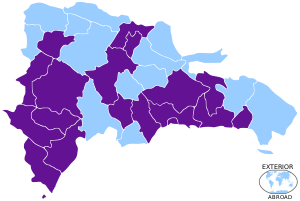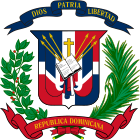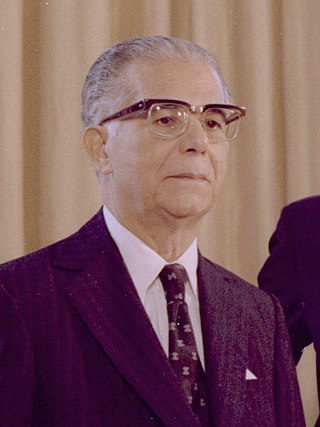
Joaquín Antonio Balaguer Ricardo was a Dominican politician, scholar, writer, and lawyer. He was President of the Dominican Republic serving three non-consecutive terms for that office from 1960 to 1962, 1966 to 1978, and 1986 to 1996.
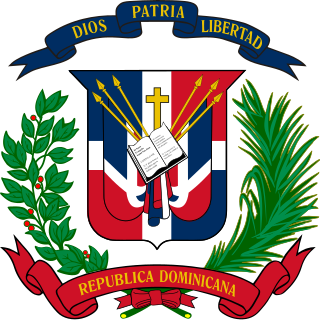
The Dominican Republic is a representative democracy, where the president of the Dominican Republic functions as both the head of the government and head of the multi-party system. Executive power is exercised by the government. Legislative power is vested in the bicameral National Congress. The Judiciary is independent of the executive and the legislature.
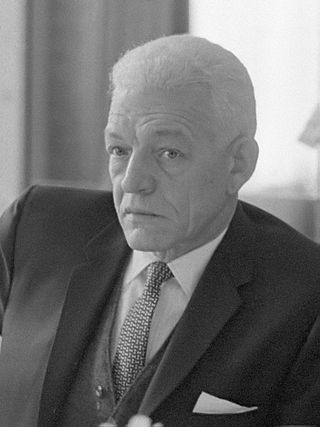
Juan Emilio Bosch y Gaviño was a Dominican politician, historian, writer, essayist, educator, and the first democratically elected president of the Dominican Republic for a brief time in 1963. Previously, he had been the leader of the Dominican opposition in exile to the dictatorial regime of Rafael Trujillo for over 25 years. To this day, he is remembered as an honest politician and regarded as one of the most prominent writers in Dominican literature. He founded both the Dominican Revolutionary Party (PRD) in 1939 and the Dominican Liberation Party (PLD) in 1973.

Rafael Hipólito Mejía Domínguez is a Dominican politician who served as President of the Dominican Republic from 2000 to 2004.
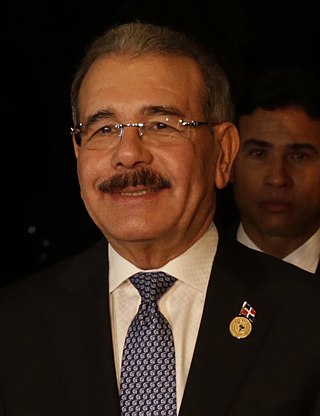
Danilo Medina Sánchez is a Dominican politician who was President of the Dominican Republic from 2012 to 2020.

Leonel Antonio Fernández Reyna is a Dominican lawyer, academic, and was the 50th and 52nd President of the Dominican Republic from 1996 to 2000 and from 2004 to 2012. From 2016 until 2020, he was the President of the EU–LAC Foundation.

The Social Christian Reformist Party is a Christian democratic right-wing political party in the Dominican Republic. It was established on July 24, 1984, by the union of Joaquín Balaguer's Partido Reformista and the Partido Revolucionario Social Cristiano. Some of the PRSC's founders and leaders were originally business leaders and Roman Catholics who opposed the communist, socialist, and social democratic tendencies of Juan Bosch, the Dominican Revolutionary Party (PRD) and the Dominican Liberation Party (PLD).

The Dominican Liberation Party is a political party in the Dominican Republic. Founded in 1973 by former president Juan Bosch, the party, along with the Dominican Revolutionary Party, and Social Christian Reformist Party, has dominated politics in the country since the establishment of democracy in the early 1960s.
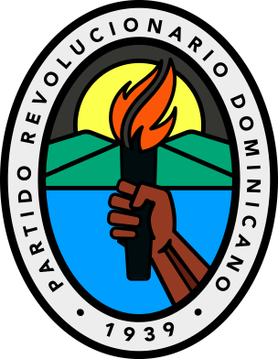
The Dominican Revolutionary Party is a political party in the Dominican Republic. Traditionally a left-of-centre party and social democratic in nature, the party has shifted since the 2000s toward the political centre. The party's distinctive color is white. Traditionally, the party has two presidents: the "Titular President" and the "Acting President" ; until 2010 the presidents and the Secretary-General were proscribed to run for any elected office.
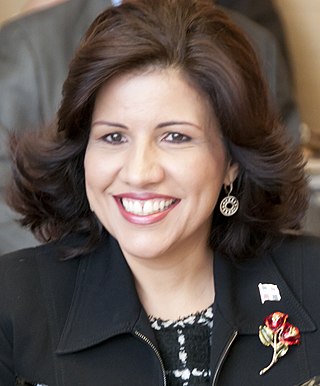
Margarita María Cedeño Lizardo, formerly known as Margarita Cedeño de Fernández, is a Dominican politician who served as Vice President of the Dominican Republic from 2012 to 2020. She was married to former president, Leonel Fernández and served as the First Lady of the Dominican Republic from 2004 to 2012.

Rafael Francisco Alburquerque de Castro is a Dominican politician who was Vice President of the Dominican Republic from August 2004 to August 2012, serving under President Leonel Fernández. Along with Fernández, he was re-elected in May 2008 for a four-year term. Before he became Vice President, he was Secretary of Labour twice between 1991 and 2000 under Presidents Joaquín Balaguer and during Fernández’s first term.

Parliamentary elections were held in the Dominican Republic on 16 May 2010 to elect the 32 members of the Senate and 183 members of the Chamber of Deputies. Polls forecasted a victory for the Dominican Liberation Party (PLD) of President Leonel Fernández. Before the election, 96 of the 178 Chamber of Deputies seats and 22 of the 32 Senate seats were controlled by the PLD.

Presidential elections were held in the Dominican Republic on 16 May 2000. A runoff was to have taken place on 30 June between first-place finisher Hipólito Mejía of the Dominican Revolutionary Party (PRD) and runner-up Danilo Medina of the Dominican Liberation Party (PLD); former president Joaquín Balaguer of the Social Christian Reformist Party (PRSC) finished third. However, Medina pulled out of the runoff after concluding he did not have enough support to overcome Mejía's first-round lead, handing the presidency to Mejía. Voter turnout was 76.1%.

General elections were held in Dominican Republic on 15 May 2016 to elect a president, vice-president and the Congress, as well as 20 deputies to the Central American Parliament, municipal councils, mayors and vice mayors. On 15 May 2015 Roberto Rosario, president of the Central Electoral Board, said that there would be about 4,300 seats up for election in the "most complex elections in history".
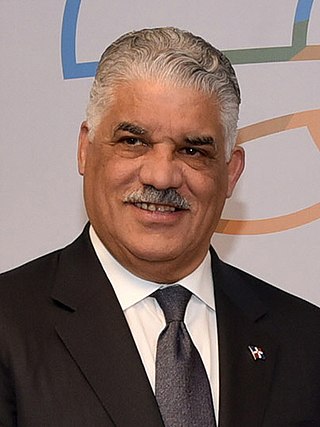
Miguel Octavio Vargas Maldonado is a Dominican civil engineer, businessman, and politician. He is the current chairman of the Dominican Revolutionary Party, and former Minister of Foreign Affairs.
Amable Aristy Castro was a politician and businessman from the Dominican Republic. He was a senior leader of the Social Christian Reformist Party (PRSC) and was a Senator for the province of La Altagracia. Aristy was the presidential candidate for his party in the 2008 presidential election. Due to the remarkable power and influence that he wielded on his native province, he was known as the "Chieftain of Higüey".

Jorge Radhamés Zorrilla Ozuna is a Dominican lawyer, politician, and retired General of the Dominican Army. He is the President and founder of the Civic Renovation Party. He was Chief of Staff of the Dominican Army from 2003 to 2004 and is the current Director of the National Institute of Price Stabilization.

General elections were held in the Dominican Republic on 5 July 2020 to elect a president, vice-president, 32 senators and 190 deputies. They had originally been planned for 17 May, but were postponed due to the coronavirus pandemic. They are the second elections since 1994 in which all positions will be elected simultaneously, and the first in Dominican history in which all authorities will be elected simultaneously and directly.

The People's Force is a political party in the Dominican Republic led by former President Leonel Fernández.
Casimiro Antonio Marte Familia, also known as Antonio Marte, is a Dominican Republic businessman, trade unionist and senator. He is part of the Social Christian Reformist Party. He has served as Senator of Santiago Rodríguez Province since 2020.
